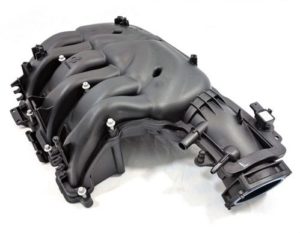That’s right, you read the title correctly, the “common fault” for a 3.6 V6 Jeep is a cylinder head issue. Well to be fair, it’s not the only “common fault”, the 3.6 engine featured in a variety of vehicles produced by Jeep and released across the globe is not much chop. In Australia, a recent push in marketing has seen the brand become an icon. People owning Macs, sitting in coffee shops dreaming of making it to the top in life, proceeding to tell their friends that they plan to do this in eight months and owning a white Jeep with black twenty inch wheels seem to be the norm these days.
The newest contender for poll position in the race to be the most popular car in the carpark of SCEGGS Darlinghurst is no longer the black Land Rover but has been overtaken by the white Jeep. Albeit complete with gutter rash and corner bumpers marked with the classy yellow paint of shopping centre carpark pylons.
The 3.6 Jeep is known for developing a misfire and in some cases logging the fault codes relating to this. We will get to the specific fault codes in a bit. The fault in question is the valves in the passenger side or left hand side cylinder head of the V. The valves burn out and cause the combustion chamber to no longer hold compression resulting in a misfire.
To repair this, the cylinder head has to be removed which is a major expense. Manufacturers are covering this under warranty however they are only repairing the effected head and not removing both heads. Whilst they have no contractural obligation to do anything with the right hand cylinder head we advise that whilst there getting both head serviced.
There is nothing to suggest there is an issue with the right hand head but simply we argue, that whilst there for an extra few hundred bucks, get the whole job done properly.
 The cause of this amazing issue is actually the inlet manifold design. The runners for the manifold cause a leaner intake mixture to come to the left hand bank than the right. The result is the left bank runs leaner and hammers the valves in that bank. Referencing the image you can see how one bank gets a more direct route of air than the other. It is believed this is the cause of the issue and also explains why only one bank is effected. Jeep have rectified this in recent models by changing the design of the inlet manifold. It visually looks like they have mirrored the manifold leaving us to suspect that in coming years we will see problems with the right hand bank but time will tell.
The cause of this amazing issue is actually the inlet manifold design. The runners for the manifold cause a leaner intake mixture to come to the left hand bank than the right. The result is the left bank runs leaner and hammers the valves in that bank. Referencing the image you can see how one bank gets a more direct route of air than the other. It is believed this is the cause of the issue and also explains why only one bank is effected. Jeep have rectified this in recent models by changing the design of the inlet manifold. It visually looks like they have mirrored the manifold leaving us to suspect that in coming years we will see problems with the right hand bank but time will tell.
Repair: Jeep have been upgrading the valves and the valve seats in the vehicles that have come through for the repair and as stated only in the left hand bank. This means that engines repaired under warranty are now possibly running different hardware in both banks depending on what repairs you had done.
We advise getting both heads removed and getting all valves and valve seats if you have this issue.
Fault Codes: The codes applicable to this application won’t always give you misfire codes for specific cylinders. i.e.: it wont say “Cylinder misfire detected cylinder 3”. Rather this fault cases generic fault codes to log. If you have “random misfire detected” start looking at this issue.
Diagnosis: A decent leak down test will reveal burnt valves. From here, time to remove the cylinder heads.
Sources suggest that In the USA, Jeep replaced 7500 cylinder heads on the 3.6 V6 engine under warranty and have offered to give owners of all Jeeps fitted with the 3.6 V6 extended warranty to protect them from this fault costing them money from their pocket. To the best of our knowledge no such arrangement has been made in Australia.
Would you like to have this repair carried out by a independent workshop that is familiar with this fault? Contact us today to make a booking.
Warriewood
-
Unit 3, 13 Ponderasa Pde
Warriewood NSW 2102 - 02 9979 5933
Hornsby
-
2/ 27 King Road
Hornsby NSW 2077 - 02 9987 2818
Jeep 3.6 V6 Cylinder Head Fault

Would You Like To Speak With The GDL Team?
Simply choose the option below that suits you best.
OR
Our Locations
Warriewood
3/ 13 Ponderasa Pde
Warriewood NSW 2102
02 9979 5933
Hornsby
2/ 27 King Road
Hornsby NSW
2077
02 9987 2818
Our Services
Follow Our Socials
Our Locations
Warriewood
3/ 13 Ponderasa Pde
Warriewood NSW 2102
02 9979 5933
Hornsby
2/ 27 King Road
Hornsby NSW 2077
02 9987 2818
Our Services
© Copyright GDL Auto 2022 | Website & Marketing By GREENhouse Media
© Copyright GDL Auto 2022 | Website & Marketing By GREENhouse Media
